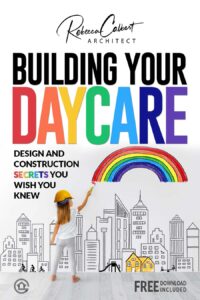Unveiling the intriguing world of establishing a commercial daycare, this article unfolds the financial aspects you need to take into account. You’ll find insightful details about the potential costs of construction, including both upfront and ongoing expenditures. It’s designed to help you thoroughly understand what goes into the making of a commercial daycare, financially speaking, and where your investment is most required. It’s all about making your entrepreneurial journey in the daycare industry a successful one.
Understanding the Basics of Building a Commercial Daycare
Entering the world of entrepreneurship with a commercial daycare can be a rewarding endeavor. It’s a business that not only generates income but also caters to a fundamental need – childcare. However, before you dive in, let’s shed some light on how to navigate your way through this complex process.
What is a Commercial Daycare
A commercial daycare is a childcare establishment that is operated as a business. It provides a safe, stimulating, nurturing environment for children while their parents are at work or unavailable. These facilities are established with the primary goal of making profits while providing excellent childcare services.
Types of Commercial Daycares
There are various types of commercial daycares, each with unique characteristics. They vary based on age groups served, opening hours, and complexity of services. You could opt for a traditional daycare, a preschool, an after-school program, or a niche program catering to specific needs, such as language immersion or special needs education. Therefore, it’s crucial to identify your target market before you set off.
Importance of Commercial Daycares
The need for reliable, quality daycare has sharply increased with the rise of dual-income families and single-parent households. Commercial daycares provide a critical service, allowing parents to work with peace of mind, knowing their children are being cared for in a conducive and supervised environment. Thus, they play a vital role in promoting economic growth, workforce productivity, and early childhood development.
Preliminary Costs
Like any business, setting up a commercial daycare comes with a range of preliminary costs.
Cost of Developing a Business Plan
A well-crafted business plan is the foundation for your daycare center. It outlines your business’ core concept, unique selling points, targeted clientele, revenue model, and estimates for expenses and profits. Hiring a professional to draft your business plan could cost from a few hundred to several thousand dollars, depending on depth and complexity.
Legal Expenses
Setting up a daycare involves several legal procedures, such as registering your business entity, obtaining permits and licenses, and drawing up contracts. Lawyers’ fees for these necessary processes can contribute significantly to your initial outgoings.
Licensing and Certification Costs
A commercial daycare requires specific licenses and certifications, which may incorporate a childcare license, a building occupancy permit, health and safety certifications, among others.
Insurance
Akin to licensing, insurance is a non-negotiable aspect of the preliminary costs. It covers general liability, workers’ compensation, and property protection, diminishing legal and financial risks.
Property Acquisition Cost
You will need to invest in a suitable facility for your daycare center, which may imply purchasing or leasing a property. In either case, a significant part of your initial budget will be consumed by the property acquisition cost.
Location and Building Costs
One of the most substantial expenses in starting a daycare center is the actual structure itself.
Building From Scratch Vs. Renovating an Existing Building
You may choose to build a new facility or renovate an existing one to suit a daycare’s needs. Both options bear their pros and cons and comes with different cost considerations. Building from scratch allows more control over design and layout, but it maybe costlier than renovations.
Location Factors Affecting Cost
Location is a massive factor in determining the cost. An area with high demand for daycare services, good reputation, and safety standards may come with higher property prices.
Cost of Land or Building Purchase
Whether you decide to lease or buy, property costs can make the most considerable chunk of your budget. Ensure you conduct a thorough cost-benefit analysis to make an informed decision here.
Architectural and Construction Expenses
If you’re building from scratch, these include consulting fees for architects and builders, blueprint creation, materials, labor, construction management, etc. It may lower start-up costs if you can find a building that only needs minor renovations.
Facility Conversion Expenses
Transforming a regular building into a daycare center involves several additional expenses.
Design and Layout Costs
Creating a child-friendly design incorporating learning and play areas, bathrooms, storage spaces, and office space can be quite an expenditure.
Security and Safety Measures
These are vital in a daycare center and include fire safety, CCTV surveillance, emergency exit routes, and alarm systems. This could mean a significant investment, but the safety of the children is non-negotiable.
Renovation or Conversion Costs
With an existing building, you may have to incur some renovation costs to adhere to safety norms and requirement specifications.
Determining Interior Setup Costs
Making your daycare conducive and appealing for your little patrons is another area calling for investment.
Furniture and Equipment
You’ll need to equip your childcare center adequately with child-friendly furniture, instructional material, toys, books, and games. Besides, you’ll need office equipment, kitchen appliances, miscellaneous storage and supplies.
Indoor Playground and Instructional Materials
Indoor activity areas or playgrounds, if you plan to include one, involves purchasing appropriate equipment. Quality instructional materials support educational programs are other expenses to bear in mind.
Accessibility Modifications
Especially if you plan to cater to children with special needs, you might need to invest in accessibility modifications like ramps, railings, and other such features.
Nursery and Kitchen Setup Costs
Setting up a nursery for infants and toddlers or a kitchen to cater meals can result in additional interior setup costs.
Outdoor Space Development
An outdoor space is equally important in a daycare setting. Creating a healthy, safe environment for children to play and explore is crucial.
Cost of Outdoor Play Area
This involves purchasing outdoor equipment like slides, seesaws, climbing frames, sandboxes, etc. Moreover, the installation and maintenance of these also add to the cost.
Landscaping and Gardening
Creating an aesthetically appealing outdoor space doesn’t just add appeal; it can serve as an excellent learning resource for children. It may involve costs related to landscaping, gardening supplies, watering systems etc.
Safety Measures for the Outdoor Space
Potential safety hazards need to be addressed, which add further costs. Installing safety surfacing, enclosures, or security gates are other elements to consider.
Outdoor Equipment and Furniture
You may also need outdoor furniture for staff or parents when they accompany their children during outdoor play times.
Operational Costs
Once your daycare center is set up and running, you’ll encounter ongoing operational costs.
Staff Salary and Benefits
Hiring a team of caretakers, educators, administrative staff, and maintenance personnel, and providing them with competitive salary and benefits package will be your largest recurring expense.
Utility Bills
Electricity, heating, cooling, water, and other utility bills should be included in your monthly operating costs.
Maintenance and Cleaning Services
To ensure a clean, healthy, and safe environment, you’ll incur costs for regular maintenance and cleaning services.
Food and Snack Services
If you plan to provide meals and snacks, it involves costs related to food supplies, preparation, and relevant permits and inspections.
Marketing and Hiring Costs
Once your daycare center is close to opening its doors, you would need to think about marketing and staffing.
Marketing and Advertising Expenses
To attract potential clients, you’ll need to set aside budget for marketing and advertising. This might include printed material, digital marketing, open-house events, PR campaigns, etc.
Hiring and Training Staff
Costs involved in recruiting, background checks, training, and orientation for your staff is another expense to factor into your budget.
Website Development
Creating a professional, user-friendly website and maintaining it is another aspect that demands a portion of your budget.
Factors That May Influence the Cost
Size of the Daycare
Size plays a significant role in determining the overall cost of the daycare center. Naturally, the larger the facility, the higher the cost will be.
Location of the Daycare
The cost can vary greatly based on the location of your daycare center. Economically prosperous areas generally require higher investments compared to areas with lower average incomes.
Quality of Facilities and Services
The quality of fixtures, equipment, materials used, services on offer, among others, dictate the cost of your daycare dramatically.
Local Regulations
Compliance with local and state-specific laws, regulations, and requirements can add to the cost. It influences matters such as building codes, ratios of children to caretakers, curriculum standards etc.
Finalizing the Budget for Your Daycare Business
Once you’ve identified all the costs involved, it’s time to sum it all up and convert it into a working budget.
Calculating Total Estimated Cost
By assessing all the factors mentioned above, you can estimate a total cost for starting your daycare business. Including everything from the practical costs of building and licensing, to the recurring costs of operation is crucial.
Securing Necessary Financing
Once you have a clear idea of the expenses, you can explore financing options. You might qualify for loans, grants, or could invest your personal savings or raise capital from investors.
Preparedness for Unforeseen Expenses
Preparedness for contingency or unplanned expenses is necessary. It’s recommended to add a safety buffer of around 10 to 20 percent to your budget to absorb any unexpected costs.
Financial Tips for Running a Daycare Business
Essential tips include prudent budgeting, regular monitoring of cash flow, and optimization of tax benefits. Regularly reviewing and tweaking your business operations to improve profitability holds the key to successful daycare entrepreneurship.
Setting up a commercial daycare center is undoubtedly a significant investment involving many variable costs. Yet, armed with a comprehensive understanding and proper planning, you can manage the complexity and experience the rewarding journey of building your daycare business.


